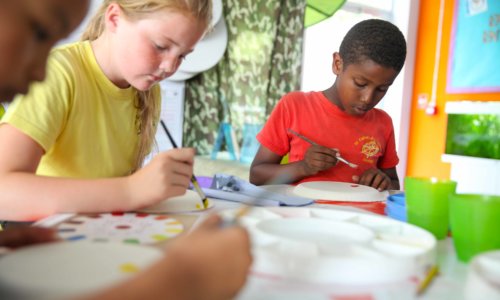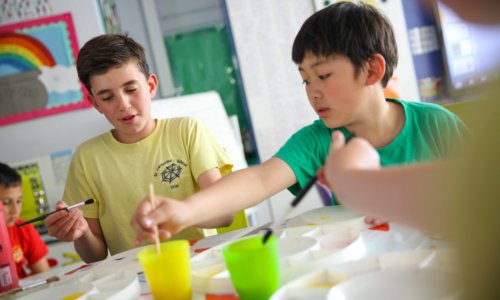Purpose of study
Art, craft and design embody some of the highest forms of human creativity. A high-quality art and design education should engage, inspire and challenge pupils, equipping them with the knowledge and skills to experiment, invent and create their own works of art, craft and design. As pupils progress, they should be able to think critically and develop a more rigorous understanding of art and design. They should also know how art and design both reflect and shape our history, and contribute to the culture, creativity and wealth of our nation.
Aims
Key stage 1 Pupils should be taught:
- to use a range of materials creatively to design and make products
- to use drawing, painting and sculpture to develop and share their ideas, experiences and imagination
- to develop a wide range of art and design techniques in using colour, pattern, texture, line, shape, form and space
- about the work of a range of artists, craft makers and designers, describing the differences and similarities between different practices and disciplines, and making links to their own work
Key stage 2 Pupils should be taught
to develop their techniques, including their control and their use of materials, with creativity, experimentation and an increasing awareness of different kinds of art, craft and design. Pupils should be taught:
- to create sketch books to record their observations and use them to review and revisit ideas
- to improve their mastery of art and design techniques, including drawing, painting and sculpture with a range of materials
- about great artists, architects and designers in history.
How to help at home
- Talk to them about art work. Having discussions about art will develop their ability to think critically and develop a more rigorous understanding and appreciation of art
- Take your child to art galleries and exhibitions in London. We are extremely fortunate living in London as there are plenty of free, child-friendly galleries, exhibitions and pop-up installations. Keep an eye out in ‘Time Out’ for possible trips. We will also put any suggestions in the School Newsletter which we hear about.
- Get creative at home! Spend time with your children sketching, painting, sculpture making, collage designing etc. Often children bring in to school art work that they have made at home with you – which is lovely to see. There are lots of books in the library and ideas on the internet of things you can make with your children at home. Giving them more opportunities to develop their art skills will help them master the techniques in the key areas of Design and Technology
- Have a sketch book which your child can take with them on holidays, days out etc. They can record their observations in their sketch books. This will help them develop their ability to make observations from real-life studies
- Make use of your local library. Children love going to the library and having access to such a huge, diverse range of books about art. Looking at existing work can help inspire and influence their art work and love for the subject.





